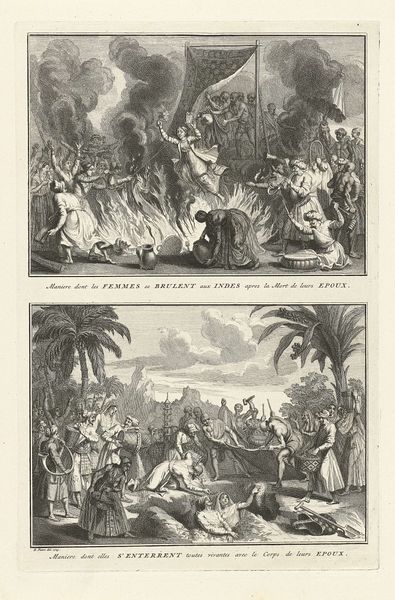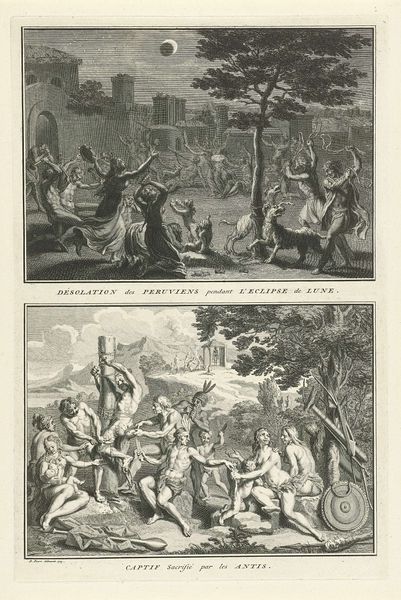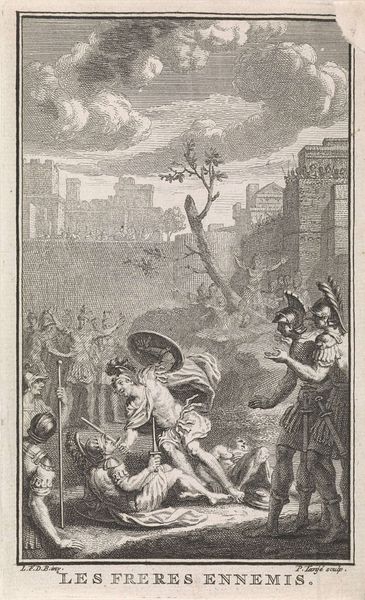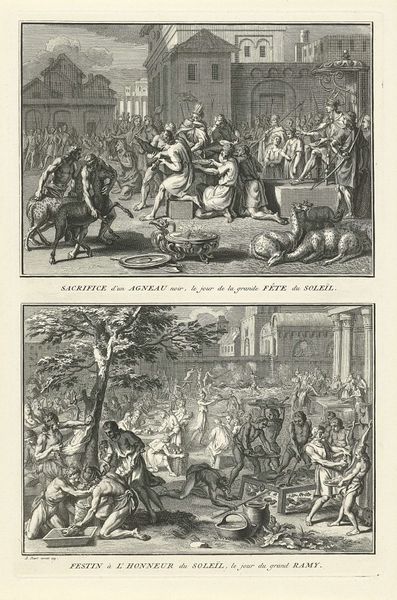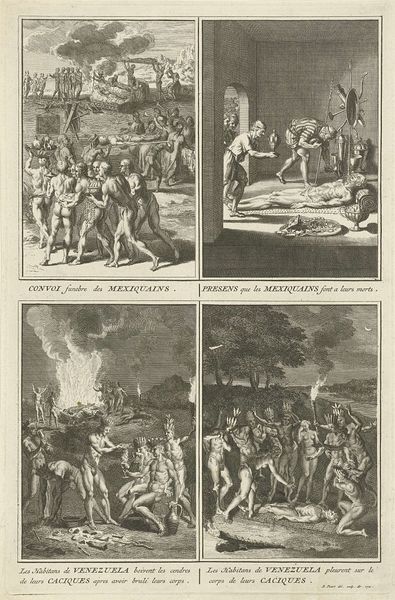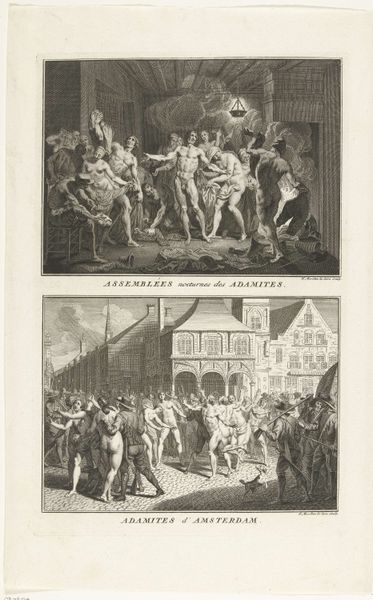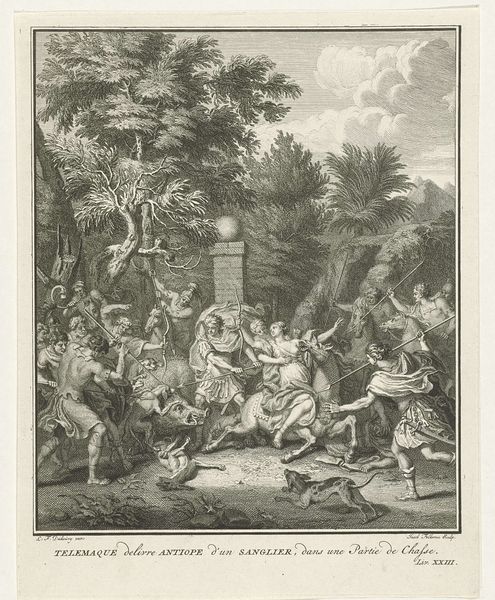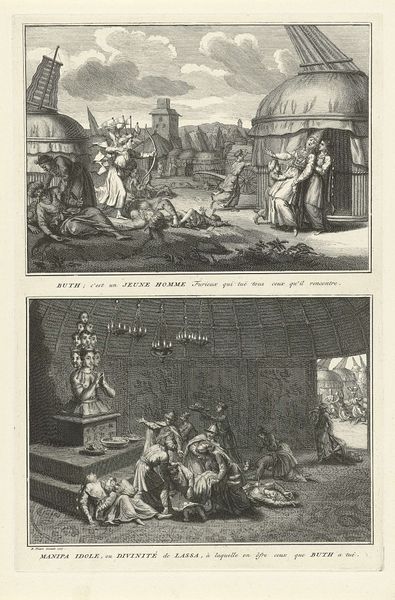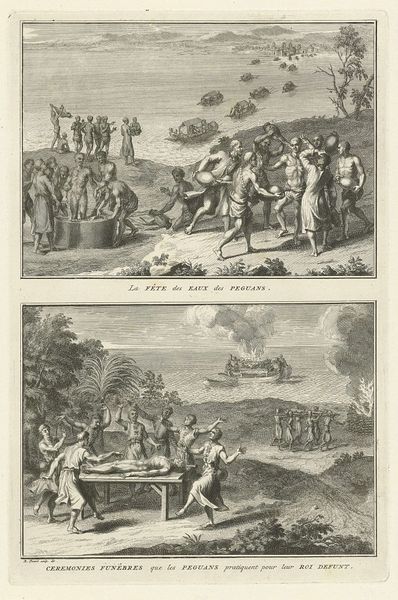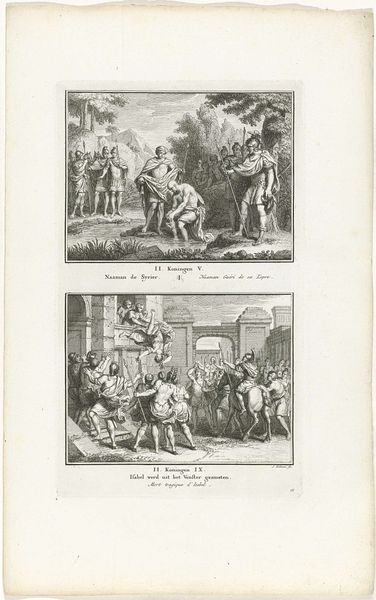
Rituelen van oorspronkelijke bewoners van Mexico rond de eeuwwisseling 1721
0:00
0:00
print, etching, engraving
#
narrative-art
# print
#
etching
#
old engraving style
#
landscape
#
figuration
#
line
#
engraving
Dimensions: height 335 mm, width 220 mm
Copyright: Rijks Museum: Open Domain
Curator: At the Rijksmuseum we have before us "Rituelen van oorspronkelijke bewoners van Mexico rond de eeuwwisseling," or "Rituals of the original inhabitants of Mexico around the turn of the century," by Bernard Picart, dating back to 1721. It's an engraving that offers a fascinating glimpse—albeit from a European perspective—into early 18th-century perceptions of Indigenous Mexican rituals. Editor: My first thought? Night and day. It's almost two different worlds contained in the same frame, right? The top feels… shadowed, secretive, while the bottom half is like a celebration in the sun. Makes you wonder what kind of shifts were happening. Curator: Indeed. The engraving is divided into two scenes, meant to represent the perceived changes in Mexican customs around the turn of the century. It’s important to remember that Picart was working with secondhand accounts and interpretations heavily influenced by European perspectives on colonialism. Editor: Ah, so not exactly a neutral observer. More like… well, a translator with his own biases sneaking into the language. Still, you get a sense of the energy, even if filtered. Look at the movements, the gestures – there's something inherently human about rituals, that pulse of communal experience. Curator: Exactly. We must consider this artwork as part of a larger historical narrative where European ideas about the 'exotic' and 'civilized' shaped the visual representation of non-European cultures. The top panel, with its nocturnal setting and what appears to be offerings and sacrifices, reinforces then-common tropes. Editor: And the bottom, with its communal dance, suggests...assimilation, maybe? Or just the imposition of a European narrative that finds it easier to digest joyful celebration than what it might interpret as 'barbaric' practices? Still, there’s an intriguing symmetry in how he frames those scenes with architectural backdrops. Almost like theater sets! Curator: It's a powerful reminder that even in visual documentation, history is rarely presented without interpretation. It also reveals much about the European gaze. Editor: Leaving us to look a little closer, question the easy answers, and dig into what’s really there. Makes you feel like a detective in a funny wig, trying to crack the case.
Comments
No comments
Be the first to comment and join the conversation on the ultimate creative platform.

